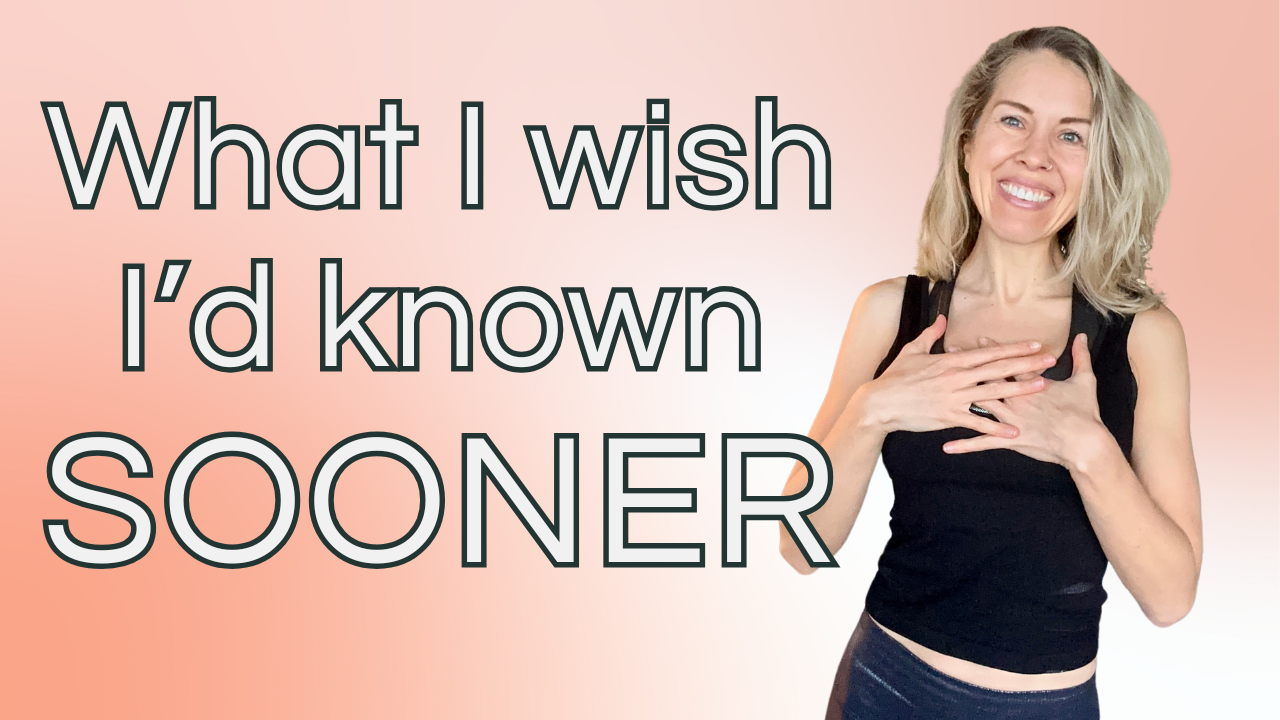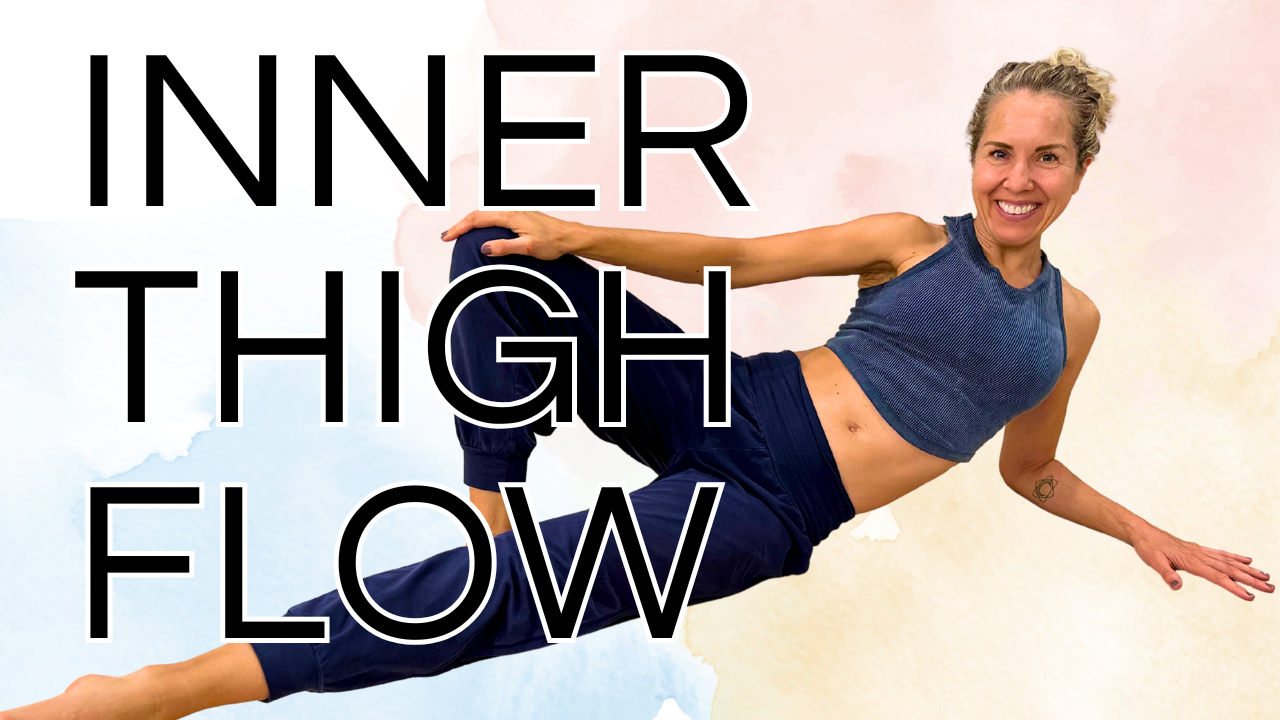Breath and Relaxation For Pelvic Health

Breathwork and meditation bring us into a state of relaxation and can improve pelvic health. This state of calm well-being reduces stress, improves our body’s ability to heal, and reduces pelvic floor tension and pain. You DO have power over your body!
How do breathwork and meditation relate to pelvic health?
The main topic people share with me is the ANXIETY that pelvic floor issues bring. So many people have pelvic tension, pain, bladder leakage, or pelvic organ prolapse, and the constant preoccupation and worrying about leakage, pain, or their pelvic shift during daily activities is a huge struggle for many of my clients.
Working with thousands of women and men over the years, I’ve seen firsthand (and experienced myself) that pelvic floor concerns can leave people feeling scared, stressed, socially withdrawn, discouraged, and disappointed in their bodies.
Unfortunately, these feelings can create tension in the body, particularly in the pelvic floor, which makes symptoms feel WORSE.
Learning to relax your pelvic floor is something that you can learn and practice daily to regain confidence and return to your active lifestyle. It is truly one of the most powerful things you can do to encourage healing by relaxing and calming your body and mind.
Let’s talk about the breath:
Your breathing diaphragm is connected to your pelvic floor via fascia, and they move together synergistically. Breathing high and shallow up in your chest does not allow full mobility of the diaphragm muscle or of the pelvic floor muscles. When you breathe in fully, using your whole lungs and allowing your breathing diaphragm to move downward, your pelvic floor releases down too. The simple act of breathing fully and deeply — the way our bodies were designed to breathe — is critical to basic bodily functions!
Pranayama
To manifest healing and relaxation of the pelvic floor you can practice one of the most powerful techniques, which is conscious breathing (pranayama to the ancient yogis). Your breath is the most powerful instrument you have to optimize your physiological functioning.
Have you ever noticed that you don’t have to think to breathe but you can consciously control it if you want to? Breathing is regulated by your autonomic (automatic/involuntary) nervous system. It regulates your heart rate, respiratory rate, digestion, and elimination.
The autonomic nervous system is further broken down into the sympathetic aspect (fight or flight) and parasympathetic aspect (rest and digest). These two systems are in constant interplay trying to create a state of best response and balance depending on what your body needs at the time.
The autonomic nervous system affects your pain response, how quickly you heal, and how you deal with undesirable feelings.
Surprise, surprise, the autonomic nervous system doesn’t always behave like we’d like it to. Sometimes we feel stressed when we’d like to feel relaxed, and other times we feel lethargic and we’d like to feel brighter and be more present. Your breath is the medicine that can cause powerful shifts in your energy (or prana in yogic language) to manifest the physiological state you’d like to create.
The healing potential of our breath is incredible.
Try this simple breathing practice that focuses on long, slow, repeated exhalations through your nose.
-
Let the nostril inhale be soft and smooth.
-
After each inhale try to gently lengthen the exhale until you achieve a 6-8 second outflow.
-
As you exhale focus on the directional outflow of your breath starting in the low belly, traveling up and outward past the diaphragm, through the rib cage, and out of the nose. The breath should always be relaxed and never forced.
-
To increase the relaxation effect, hold the breath out after exhale (retention) for 1-2 seconds.
Practice this pranayama for a few minutes, 1-2 times each day, for relaxation and to take away stress and nervous energy. Conscious breathing provides strength without stress, trust in your healing capabilities, and pain reduction for optimal healing inside and out.
Sometimes you just need to take a rest and breathe.
Here is a quick mini-meditation for Pelvic Health:
"Breathing in, I calm my body. Breathing out, I smile. Dwelling in the present moment. The only moment."
~Thich Nhat Hanh
3 Secrets to Better Breathing for Pelvic Health:
Now that you know how powerful your breath is when it comes to calming the mind and body, let’s talk about my favorite breathing technique: “360-degree core breathing.”
Where? The diaphragm is at the top of your core, and your pelvic floor is at the bottom. They are connected by fascia. In “360-degree core breathing,” they move together, like a team!
How? Bring your breaths down (out of your neck and shoulders). Gently expand into the front, sides, and back of your ribs and belly as you inhale. Fill your lungs slowly so that you don’t get dizzy. As you inhale, your diaphragm moves down and your pelvic floor lengthens and lowers. As you exhale, your diaphragm moves upward and your pelvic floor gently lifts.
When? All the time! Practice makes perfect, so focus first on this style of breathing as a relaxation exercise to relieve stress and tension. But with time and practice, this style of breathing will become normal for you and you can utilize it all day long.
I like to think of 3 different specific uses for this type of breath:
-
Relaxed - use this 360-degree (i.e. expanding all around on the inhale) breathing technique to breathe in a gentle + relaxed fashion, all day long.
-
Mobility - use it more intentionally to mobilize and strengthen the core muscles. Inhale deeply and fully and feel the release of the pelvic floor, and then exhale strongly focusing on a strong contract and lift of the pelvic floor. This can be used instead of kegels to strengthen the pelvic floor in a more functional way (integrated with the other core muscles)! It’s also the style of breathing you’ll use when transitioning from sit to stand. Exhale and really feel the lift of your pelvic floor as you stand up.
-
Active - this is how to breathe when “zipping up” your core. Zipping up is great for stability and control during these times when you need a little extra boost of core activation, just remember: DO NOT hold your breath! In order to keep your tissues oxygenated AND to manage intra-abdominal pressure, YOU STILL NEED TO BREATHE! Do the diaphragmatic breath as described, but instead of your belly softening and expanding as you inhale, your pelvic floor and low abs will remain gently lifted and drawn in.
A key point about breathing and exercise: Breathe through your exercises (don't ever hold your breath). Exhale with exertion, and do “Active” breathing when you're zipping up your core. At other times — for example, when you're hiking, walking, or running — just know that maintaining proper posture/alignment and using the “Relaxed” or “Mobility” style of breathing is enough!
The power of meditation for your pelvic floor:
Your mind is more powerful than your body. The mind is actually “the boss!” When your mind is calm, your muscles are calm. Your circulation improves, and your tissues become healthier. You have the power to stimulate healing and relaxation. Simply giving your body a break via meditation is exactly what it needs to release, relax, and heal. As I always like to say, “calm muscles work better!”
With the help of meditation, you can relieve pelvic tension and pain, and you can relax the tight muscles that are often squeezing around prolapsed organs. This tension is NOT “keeping everything in;” rather, it’s contributing to the problem of bladder leakage, frequency, urgency, and prolapse.
The number one comment I see constantly on my YouTube videos is that my relaxation exercises have released people’s pain and tension, and their bladder problems have resolved. Pretty amazing huh?!
Try it with me in this guided meditation for pelvic health:
To sum it up, breathing DOES impact your pelvic floor!
Proper breathing is great for your pelvic health, whereas improper breathing can cause pelvic floor tension and/or downward pressure. Stop and think about your breathing. Are you breathing up high into your neck? Are you holding your breath? How do you stand, do you have a rib flare?
There are things you can do to make sure you are breathing correctly to not put pressure on your pelvic floor:
-
Neck, chest, and ribcage stretches to loosen up for a full breath
-
Visual: Look at yourself in the mirror and watch to be sure your neck muscles aren’t active when you breathe, and that your shoulders don’t go up and down when you breathe
-
Kinesthetic: Place your hand on your sternum, side ribs, and back ribs (between the shoulder blades) and breathe into each of these areas
-
Do not flare out your ribs as you stand or walk: think of keeping your ribcage stacked over your pelvis
-
Learn how to take in a full breath (360-degree core breathing as described above)
Breathing better makes you feel better, helps your body work better, and relieves pelvic tension!
*NOTE: This website in general, and this article specifically, is for general information and educational purposes only. It is not intended to diagnose or treat any medical condition, but rather to understand what options are available. Please seek the advice of a physician to properly diagnose your symptoms.
Does your pelvic floor need help?
Many women think they just need live with the changes they’re experiencing
“down there,” but this is NOT the case. Take the short quiz to find out if you have issues that can be solved naturally.







